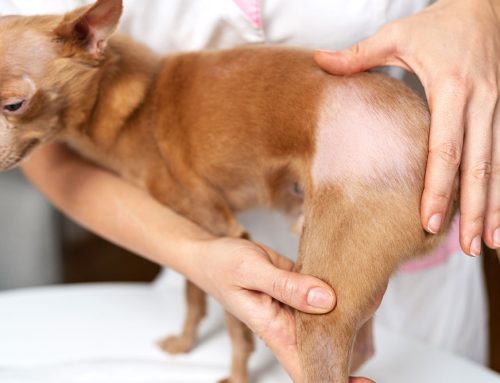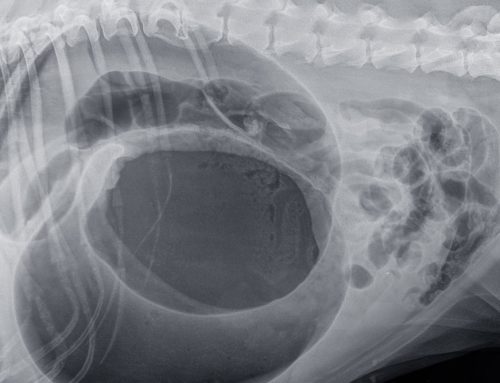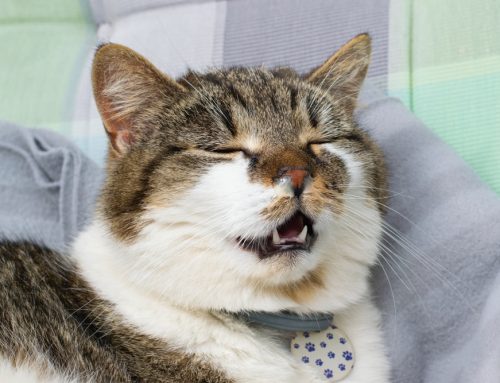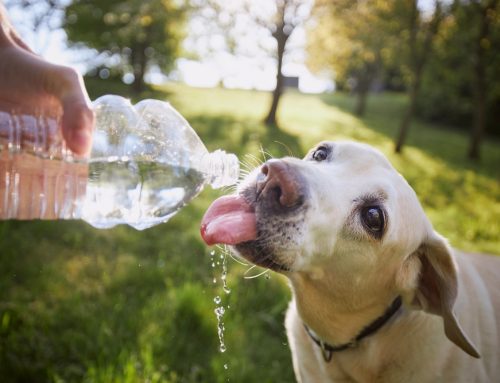Back-to-school preparations and changes affect the whole family, including your pet. To help you walk in your pet’s paws, our Star of Texas Veterinary Hospital team asked our 4-year-old patient, Louey the Labrador retriever, to share the important considerations pets want you to know regarding the effect of the new back-to-school routines.
#1: Pets don’t like change—introduce routines slowly
Louey: I like knowing my daily routine and what to expect throughout my day, but when the schedule changes without warning—well, that can really make a guy anxious! One day I’m enjoying my daily play session with the little humans in the backyard, and the next morning, I’m rolling out of bed, ready for another relaxing day—BAM!—my family is rushing around, throwing things in backpacks, grabbing the car keys, and tossing kibble in the bowl as they rush out the door.
Pets are creatures of habit, and you should gradually introduce them to new routines over time. Incorporate schedule changes several weeks before the first day of school to help your pet acclimate to household routine changes. Set the alarm to wake you a bit earlier each day, until you are rising at the time necessary to get ready for school, and gradually adjust your pet’s meal times and potty breaks to reflect the new routine. Give your pet opportunities to stay home alone, and gradually increase the time so they are comfortable alone when the family is away for the day.
#2: Pets can get emotional when you leave—downplay exits and returns
Louey: Now, I don’t want this getting around to my friends at the dog park, but I hate goodbyes. When I see you pick up those keys and head to the door, my heart starts beating fast. Then, when you turn back before opening the door, crouch down to scratch my ears, and talk in the baby voice you use only when you feel bad for leaving me, I just lose it. I howl in sadness and try to open the door to chase after you—until I remember I don’t have thumbs and can’t operate a doorknob. I run to the window to watch you drive down the street, and once I’ve accepted you’re gone, I start my object permanence daily affirmations and remind myself you didn’t leave me forever.
Louey is not the only pet who gets worked up when their family leaves the house. The more emotional you are when leaving and returning home, the more anxious your pet will become. Help your pet feel secure by resisting the long goodbyes and overzealous homecomings, and remaining calm and nonchalant.
#3: Pets still need walks—stay consistent with daily exercise
Louey: During the summer, my family has plenty of time for walks. In fact, we often take two walks a day. But once the little ones go back to school and everyone starts rushing around again, our walks become shorter and less frequent, when I feel like I could run for miles. To burn energy and maintain my peak physical condition, I play American ninja puppy warrior when the family is away. After a running start, I take a giant leap on the couch, followed by a pillow toss, and two laps around the house chasing the cat. After that, I feel great.
Regular exercise is essential for your pet’s mental and physical health and, as Louey has noted, a pet with extra energy always finds ways to entertain themselves. Ensure your pet gets plenty of daily exercise, regardless of your daily schedule. If you are unable to walk with your pet, consider hiring a dog walker to ensure they get the exercise they need. Before you leave your pet home alone, place their favorite toys in various places around the house to encourage their seeking instinct to keep them busy and entertained, and ensure they have plenty of interactive toys for mental stimulation.
#4: I might need more support—watch for your pet’s separation anxiety signs
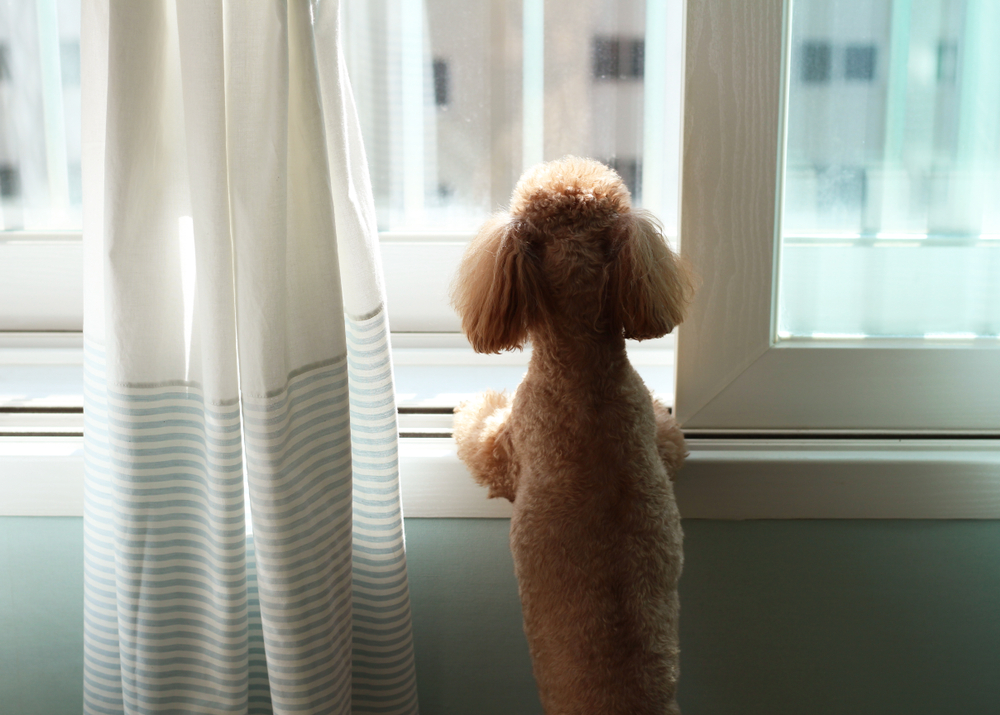
Louey: When my friend Sheila the schnauzer’s family headed back to school, she was all alone in her kennel during the day. Sheila didn’t handle their absence well. She broke out of her kennel, and searched the entire house—turning that house upside down—looking for her people. Her family came home to quite the mess. Turns out she had separation anxiety. Fortunately, Sheila’s veterinarian was able to help, and she began feeling more comfortable being home alone during the day.
Destructive behavior is often a separation anxiety sign. Consult your veterinarian if your pet shows any of these separation anxiety signs:
- Trembling
- Drooling
- Excessive licking
- Excessive scratching
- Increased barking
- Increased whining
- Urinating or defecating inside (for dogs), or outside the litter box (for cats)
- Attempting to escape through windows, doors, or crates
Keep your pet’s wellbeing in mind as you and your family transition to the school year’s new routine. We hope Louey’s perspective gives you some insight on how all the changes affect your pet. Think about Louey’s advice as you help your pet adjust to the approaching school year’s new schedule, and reach out to our Star of Texas Veterinary Hospital team if your pet begins showing separation anxiety signs.

